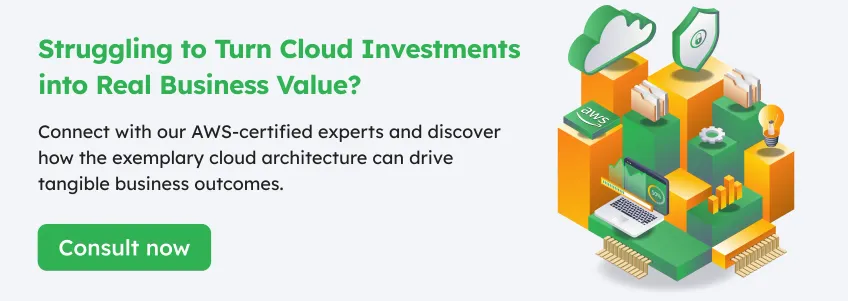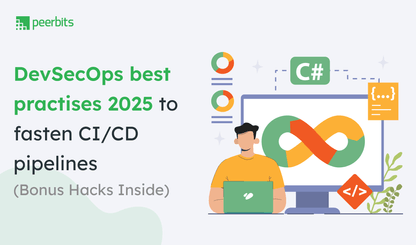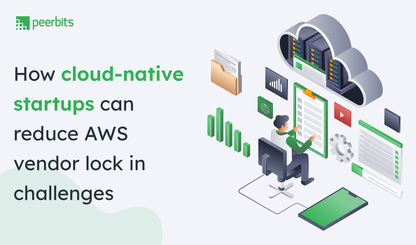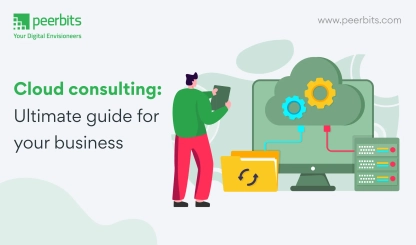There is a massive demand for cloud adoption on a global scale, and it’s happening fast.
But then, some enterprises struggle to align their cloud journeys with tangible business outcomes.
A solution? AWS cloud architecture best practices.
Why?
Because it helps build cloud computing solutions that deliver long-term value without spiraling complexity or cost.
Right now, the conversation has shifted! It’s not about why to move to the cloud, but how.
AWS has captured 33% of the market, and cloud spending will cross $1 trillion by 2026.
It means that businesses are exploring how they can build strategic, value-driven cloud ecosystems to support innovation and sustainable growth.
Here’s where AWS cloud consulting services play a key role. They can connect cloud capabilities directly to business outcomes. By applying the AWS Well-Architected Framework, consulting teams help organizations design environments built for security, resilience, and long-term efficiency.
What is AWS Cloud consulting?
AWS cloud consulting services provide strategic expertise to help organizations translate their cloud goals into practical, scalable solutions. AWS cloud consulting services guide businesses through every phase—from strategy development and architecture design to execution.
Businesses modernizing legacy systems or scaling new-age SaaS platforms can benefit from consulting engagements. They get the actionable frameworks that support faster, more confident adoption of cloud-native architectures.
Scope of AWS Cloud consulting
Now, let's find out what AWS cloud consulting offers in terms of services.
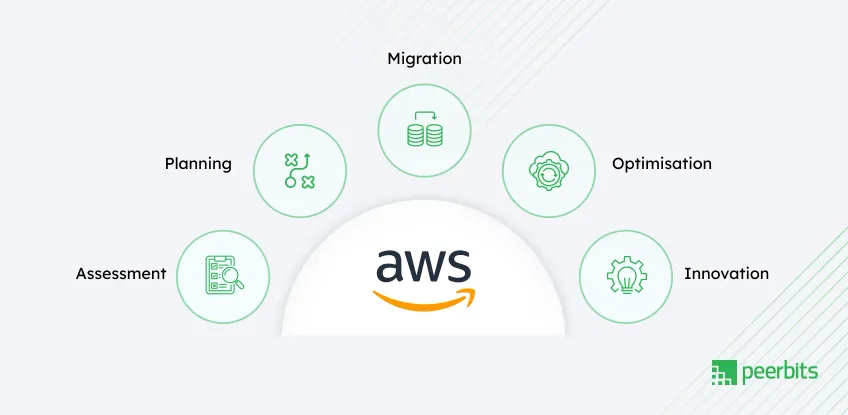
Assessment
Successful cloud strategies begin with consultants deep-diving into your current state to discover what’s working and what’s not and understand what’s silently draining resources.
Planning
Consultants craft detailed migration blueprints that align cloud strategies with business priorities.
Migration
You may be dealing with rehosting, re-platforming, or refactoring. AWS experts handle migrations through industrialized frameworks, automated pipelines, and migration factories.
Optimization
Expect everything from AWS cost optimization consulting sessions to infrastructure audits that reduce underutilization and identify right-sizing opportunities.
Innovation
Once the basics are stable, AWS cloud consultants help adopt and embrace advanced AWS services such as containerization strategies, real-time analytics, and machine learning pipelines.
How AWS cloud consulting helps
AWS cloud consulting services help you with actionable strategies that directly improve project outcomes. Here’s how it helps.
Accelerates time-to-value for cloud projects
AWS consultants accelerate project delivery by offering pre-architected solutions, reusable templates, and automation accelerators. These assets reduce the time spent on manual setup and help teams move quickly from planning to deployment.
Reduces architectural risks and unexpected costs
Consultants implement AWS architecture best practices to mitigate these risks and offer cost-effective, resilient, and scalable solutions.
Aligns infrastructure with security and compliance mandates
AWS consultants design architectures that follow strict regulatory requirements for compliance like HIPAA, GDPR, or SOC 2.
Brings access to AWS-certified architects and partners
Through the AWS Partner Network (APN), businesses also acquire direct access to exclusive tools like AWS Migration Hub and AWS Control Tower for smoother transformations.
When should a business seek AWS consulting?
Businesses engage AWS consultants when navigating complex migrations, scaling modern cloud-native applications, or unlocking advanced architectural capabilities.
During replatforming
Consultants offer architectural guidance for containerized environments like ECS and EKS, helping improve scalability and operational efficiency.
Modernization
When modernizing applications, AWS consultants design cloud-native architectures using services such as Lambda, API Gateway, and DynamoDB, enabling faster deployment pipelines and optimized performance.
Overcoming scalability bottlenecks
To overcome scalability challenges, consultants implement intelligent solutions like Auto Scaling Groups, Elastic Load Balancers, and advanced caching mechanisms with Amazon CloudFront and ElastiCache.
Taking compliance initiatives
AWS consultants design secure architectures aligned with frameworks like NIST, ISO, and the AWS Well-Architected Framework by integrating AWS Shield and Macie for top-notch security monitoring.
AWS Cloud common engagement models
You don’t get AWS cloud consulting as a cookie-cutter solution. It’s because businesses engage consulting partners through different models based on where they are in their cloud journey and the complexity of their workloads. Below, we’re taking a closer look at how organizations typically collaborate with AWS experts.
Project-based consulting
It’s a model focused on targeted, high-impact initiatives where specialized consulting teams are brought in to solve specific challenges. Engagements are short-term but intensely focused on delivering outcomes with precision.
Ideal for:
- Migrations of legacy applications to AWS
- App refactors to adopt microservices or serverless architectures
- One-off workloads that require high scalability or compliance readiness
Managed cloud architecture support
Managed support becomes invaluable when businesses need continuous oversight of their cloud environments. AWS consultants help maintain optimized infrastructure aligned with long-term business objectives.
Includes:
- Long-term cloud cost control and resource optimization using advanced AWS FinOps best practices
- Performance tuning for cloud-native and hybrid workloads
- Ongoing security monitoring and compliance management
Advisory & governance consulting
It’s an AWS engagement model that enables organizations to build internal cloud leadership and governance models. It’s ideal for enterprises scaling cloud operations or entering regulated industries.
Involves:
- Setting up a Cloud Center of Excellence (CoE) for strategic cloud adoption
- Conducting compliance audits to meet frameworks like HIPAA, GDPR, and ISO
- Implementing cost governance and AWS consulting best practices for financial accountability
Best practices in architecting for the cloud with AWS consulting
Building cloud environments requires AWS consultants who can endure the test of time. They lead with technical precision and business foresight to implement AWS cloud architecture best practices based on their real-world experiences.
Ultimately, you’ll be delivered with scalable, resilient, and secure solutions. Here’s what the AWS consulting includes as part of best practices in architecting for the cloud.
Design for scalability and elasticity
Modern cloud architectures thrive on flexibility. As user demands grow and business cycles fluctuate, your infrastructure must adapt quickly to deliver consistent performance without manual intervention.
That’s why designing for scalability and elasticity isn’t an afterthought; it’s a core principle of every future-proof cloud strategy.
Why dynamic scaling is essential in modern applications
Dynamic scaling ensures that your applications respond to demand fluctuations automatically and maintain performance while optimizing resource consumption.
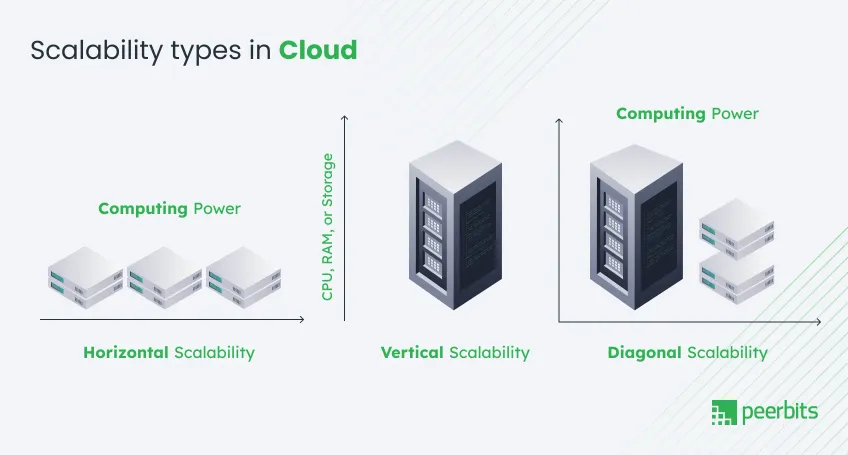
- It helps keep the customer experience smooth during unpredictable traffic surges
- Teams avoid the overhead of constantly adjusting resources by hand
- Financial efficiency improves as resources align perfectly with usage patterns
Auto Scaling Groups, AWS Lambda, and ECS Fargate in action
AWS provides a diverse set of services to support dynamic scaling strategies based on your workload type:
Auto Scaling Groups (ASG)
Suitable for managing virtual machines, ASG automatically adjusts EC2 instances based on CPU, memory, or custom application metrics. Combined with Elastic Load Balancers, this ensures traffic is distributed efficiently, keeping latency low even under pressure.
AWS Lambda
Lambda offers instant scalability for serverless architectures. It’s ideal for event-driven applications that experience variable workloads, allowing functions to scale in milliseconds as requests increase.
ECS Fargate
When working with containerized microservices, Fargate eliminates the need to manage servers. It handles scaling at the container level, enabling faster deployments and consistent performance during growth phases.
How AWS consulting helps determine the right triggers and thresholds
Setting up scaling policies requires AWS consultants to analyze your application workloads, business events, and usage patterns to design precise scaling strategies.
Typically, they’d engage in the following areas:
- Configuring CloudWatch alarms to trigger scaling based on critical business KPIs, not just system-level metrics.
- Implementing predictive scaling models to anticipate future growth patterns, helping infrastructure stay ahead of demand.
- In business-critical scenarios, scaling actions are tied directly to planned events, like marketing campaigns or product
- launches, to ensure that server capacity is available when it’s needed most.
Automate and track
Automation drives operational excellence in modern cloud environments by helping reduce manual intervention. It also unlocks faster, more reliable deployments by allowing you to maintain consistency while scaling confidently.
Infrastructure as Code using AWS CloudFormation, CDK, and Terraform
Infrastructure as Code (IaC) brings predictability to cloud deployments by turning infrastructure management into a version-controlled, repeatable process.
AWS CloudFormation
Ideal for teams building entirely within the AWS ecosystem. It uses JSON or YAML templates to define infrastructure components, enabling seamless resource provisioning and rollback capabilities when paired with AWS Change Sets.
AWS Cloud Development Kit (CDK)
This is a powerful tool for development teams that prefer using familiar programming languages like TypeScript or Python to define cloud resources. It promotes reusable code constructs, making it easier to integrate infrastructure definitions directly into application codebases.
Terraform
Highly valued for its multi-cloud flexibility, Terraform helps organizations manage hybrid or multi-cloud environments to create portable, modular infrastructure using its state management and plan/apply cycles.
Automating monitoring, alerting, and rollback workflows
Automation in AWS goes beyond deployment as you implement monitoring and rollback strategies for resilience when things go wrong.
- Use Amazon CloudWatch for real-time metric collection and automatic alarm triggering based on defined thresholds. Custom dashboards offer visualization of critical system health indicators.
- Implement rollback strategies with AWS CodeDeploy using blue/green and canary deployments. This minimizes downtime and allows quick recovery if issues arise in production.
- Integration of AWS Config and Systems Manager Automation simplifies compliance monitoring and remediation workflows.
How consultants integrate automation into pipelines from Day 0
AWS consultants focus on automation from the outset, building continuous integration and deployment pipelines that enforce governance, security, and testing.
- Leverage AWS CodePipeline to orchestrate complex CI/CD flows across multiple AWS services.
- Automate security checks using Amazon Inspector and integrate vulnerability scanning directly into the pipeline.
- Embed performance and load testing early in the deployment cycle, using tools like AWS CloudWatch Synthetics to validate user journeys under varying conditions.
Build for failure and recovery
High-performing cloud architectures are designed to anticipate disruptions and maintain service continuity. Recovery planning ensures that systems remain available and data remains protected under all conditions.
Designing Multi-AZ and Multi-Region failover systems
Architectures built with availability in mind deliver reliable services globally.
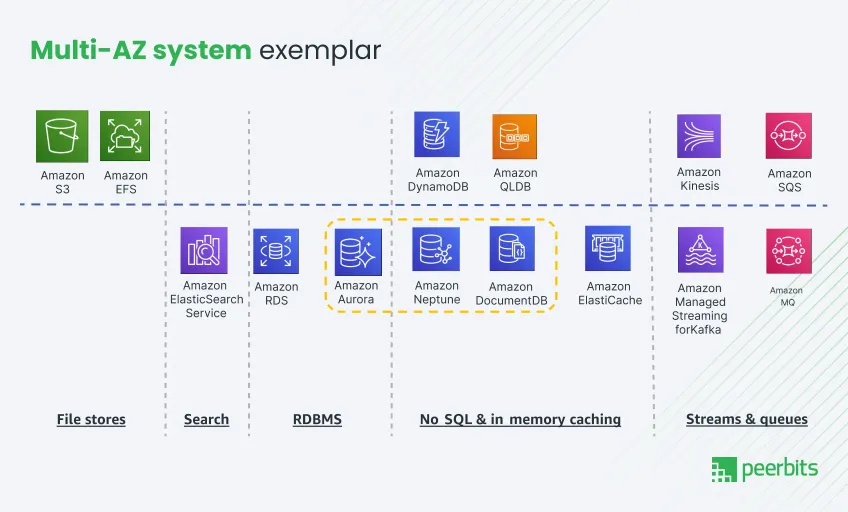
- Deploy critical workloads across multiple Availability Zones using services like Amazon RDS Multi-AZ and Elastic Load Balancing
- Establish Multi-Region architectures leveraging Amazon Route 53 for intelligent traffic routing and failover strategies
- Use Amazon Aurora Global Databases to replicate data across Regions for low-latency access and rapid recovery
Backup strategies, versioning in S3, RPO/RTO considerations
Comprehensive backup strategies ensure that recovery is fast and data loss is minimized.
- Automate backups for critical services using AWS Backup and define clear retention policies
- Enable S3 Versioning to maintain historical versions of important data
- Define clear Recovery Point Objectives (RPO) and Recovery Time Objectives (RTO), ensuring your disaster recovery strategies align with business continuity plans
How AWS consultants stress-test architectures with chaos testing
Validating resilience through controlled testing helps strengthen recovery strategies. AWS cloud consulting will thus involve the following steps in this regard.
- Consultants use AWS Fault Injection Simulator to introduce fault scenarios and evaluate system behavior.
- These simulations help fine-tune failover mechanisms to make the architecture more robust.
- Data from these tests informs future architectural improvements to improve reliability further.
Securing every layer
Security is a continuous commitment embedded throughout every layer of your cloud architecture. Protecting cloud environments requires a defense-in-depth approach that extends beyond the network perimeter and addresses risks at every layer of the stack.
IAM policies, service-level encryption (KMS), VPC security groups
AWS cloud security begins with strong identity management and data protection practices. It requires AWS consultants to take the following steps:
- Implementing least-privilege access models using AWS IAM policies so that users and applications only have the permissions necessary to perform their tasks.
- Applying end-to-end data encryption using AWS Key Management Service (KMS) to manage encryption keys securely. Data can be encrypted at rest and in transit across all AWS cloud computing services.
- Configuring VPC Security Groups and Network ACLs to create strict network boundaries by defining inbound and outbound traffic rules.
Zero trust networking and private endpoints (VPC interface endpoints)
A Zero Trust approach guarantees that every request is verified, regardless of origin, wherein every network interaction is untrusted by default.
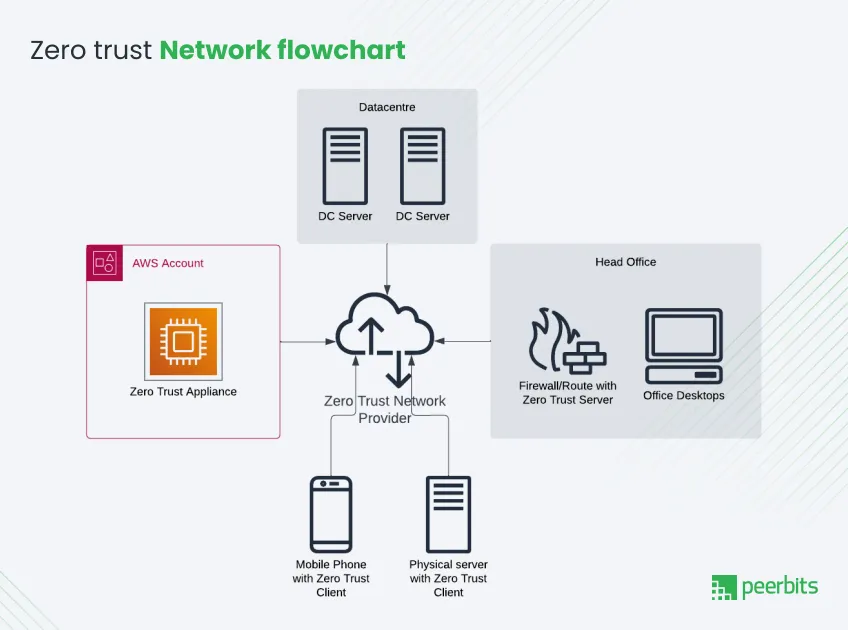
And so, continuous verification and strict access controls are needed.
Some of the key actions are:
- Establishing secure connections to AWS services using VPC Interface Endpoints, keeping traffic within private networks.
- Enforce continuous authentication and authorization to validate every access request.
- Leveraging micro-segmentation and policy-based access controls to minimize exposure risks.
Consulting teams often run security audits and fix misconfigurations
Misconfigurations remain one of the most expected security risks in cloud environments. AWS consulting teams help organizations avoid potential vulnerabilities.
- Conduct regular AWS Config compliance scans to identify and remediate non-compliant resources automatically.
- Implement continuous threat monitoring using services like Amazon GuardDuty, AWS Security Hub, and Amazon Macie to detect sensitive data.
- Review and adjust IAM policies, encryption practices, and logging configurations to maintain alignment with evolving security requirements and AWS best security practices.
Design with observability and feedback Loops
Visibility into your systems is critical for delivering reliable services and ensuring continuous improvement.
Observability helps teams understand system behavior in real-time, while feedback loops provide actionable insights that drive informed decision-making and system enhancements.
Metrics with CloudWatch, logs with OpenTelemetry, and X-Ray for tracing
AWS offers a comprehensive set of tools to build highly observable systems which includes the following:
Amazon CloudWatch
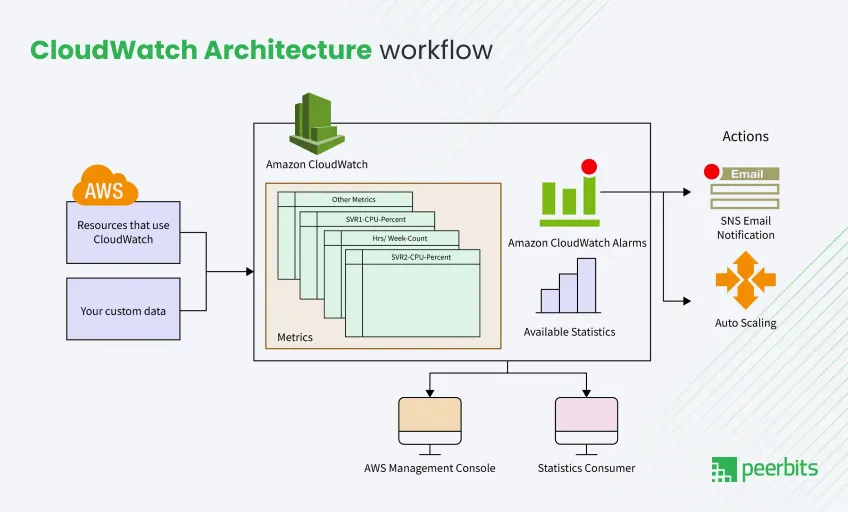
Collects and visualizes real-time metrics from AWS resources and applications. Teams monitor performance, set alarms, and respond to threshold breaches quickly.
OpenTelemetry
Standardizes and collects telemetry data such as traces and logs across distributed systems, enabling seamless correlation of application performance metrics.
AWS X-Ray
Provides deep tracing capabilities, allowing teams to visualize application flows, pinpoint performance bottlenecks, and analyze latency across microservices.
Dashboards, SLAs, SLOs—building actionable visibility
Effective observability requires making it actionable by following a few steps as below:
- Create custom dashboards in CloudWatch to provide at-a-glance visibility into business-critical metrics and operational health.
- Define Service Level Agreements (SLAs) and Service Level Objectives (SLOs) to establish clear performance benchmarks. These metrics guide engineering teams to prioritize improvements that directly affect customer satisfaction.
- Use anomaly detection and predictive analytics to proactively identify potential issues before affecting system performance.
How consultants set up alerting thresholds tied to business KPIs
AWS consultants ensure that alerting mechanisms exceed technical thresholds and align with business outcomes.
- They work with stakeholders to define KPIs reflecting customer experience and revenue-impacting performance.
- Implement CloudWatch alarms and event-driven notifications, prioritizing incidents based on business impact.
- Establish feedback loops integrating monitoring insights directly into development sprints and operational reviews.
Benefits of working with AWS consulting partners
Working with AWS consulting partners unlocks strategic advantages that go far beyond technical execution. These alliances accelerate cloud adoption, improve governance, and bring expertise that directly translates into faster business outcomes and reduced operational risks.
#1. Access to expertise
AWS consulting partners bring experience and deep technical knowledge to every engagement.
- Stay current with evolving service capabilities: They are continuously updated on new AWS services and features, ensuring your architecture remains modern and efficient.
- Experience from multiple industry verticals: Consultants apply proven patterns from industries like finance, healthcare, and retail to solve unique business challenges.
- Hands-on guidance from AWS Partner Network (APN) experts: Their certified architects work closely with AWS service teams, giving your projects insider-level support and early access to AWS innovations.
#2. Built-in toolkits
The right tools accelerate progress. AWS consulting partners come equipped with a complete stack of resources.
- Leveraging top tool stack: From AWS Migration Hub to Control Tower and Trusted Advisor, they deploy the right tools at every stage of your cloud journey.
- Streamlining tasks with the right tools: They reduce time spent on repetitive tasks by using automation frameworks and pre-built architectures.
- Integrate with third-party governance: Partners help extend AWS environments with third-party tools for compliance, monitoring, and cost optimization.
#3. End-to-end accountability
AWS consulting partners stay involved throughout the lifecycle of your cloud initiatives, ensuring consistent outcomes.
- Involvement at each step: They remain accountable for everything from initial architecture design to post-deployment optimization.
- Reduces handover friction: Clear documentation and operational handoffs ensure smooth transitions to internal teams.
- Upkeeping compliance: Consultants monitor continuously, aligning architectures with evolving regulatory standards.
#4. Faster time-to-business value
Accelerating cloud outcomes is a priority for every business, and right AWS managed service partner help make that possible.
- Reduce provisioning time: Pre-built infrastructure templates and automation tools streamline deployments.
- Leveraging partner playbooks: Partners shorten project timelines and mitigate risks using proven migration and optimization playbooks.
- Reach project goals: Their focused engagement helps organizations achieve business milestones faster, whether launching new products or entering new markets.
#5. Risk mitigation & governance built-In
AWS consulting partners don’t just design architectures—they design guardrails that keep your environment secure and cost-effective.
- Benefitting from the partner’s policies: Leverage established governance models that reduce the risk of misconfigurations.
- Implementing compliance frameworks: Partners help integrate regulatory requirements like HIPAA, SOC 2, and GDPR into your cloud workflows.
- Applying cloud FinOps practices: Advanced cost governance models ensure ongoing financial accountability through structured reporting and actionable optimization strategies.
Real-world case studies
Several organizations have successfully leveraged AWS cloud consulting services to solve complex architectural challenges and drive innovation at scale.
Healthcare: Healthvana | HIPAA-compliant data lakes
Healthvana streamlined secure health record delivery using AWS cloud consulting to meet HIPAA compliance.
AWS experts aligned their cloud-native architecture with stringent security, operational excellence, and reliability standards.
Finance: Deriv | high-frequency trading with low-latency compute
Deriv improved trading performance globally by working with AWS consultants to optimize their network architecture using AWS Global Accelerator.
This enabled low-latency, high-availability infrastructure tailored for financial services.
Manufacturing: AISIN AW | real-time IoT analytics at the Edge AISIN AW transformed its manufacturing analytics by leveraging AWS IoT, Lambda, and DynamoDB. AWS consultants guided their edge-device architecture and real-time analytics implementation, improving operational visibility and decision-making.
Conclusion
Successful cloud transformation is about building resilient, scalable systems that drive real business outcomes. You’d need cloud consulting for architecting because they help with the right strategy, expertise, and governance.
Partner with AWS consulting experts to gain a clear path to innovation, performance, and long-term growth.
